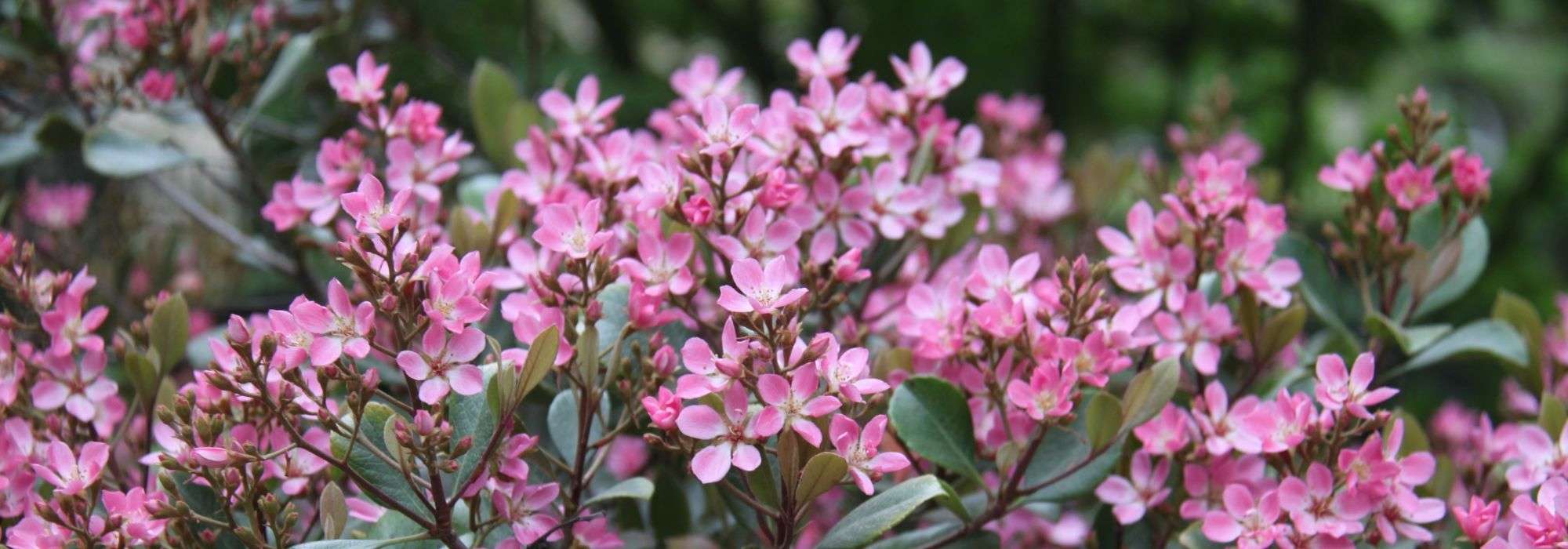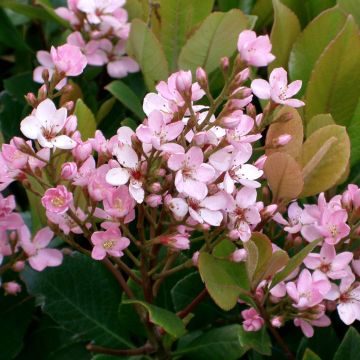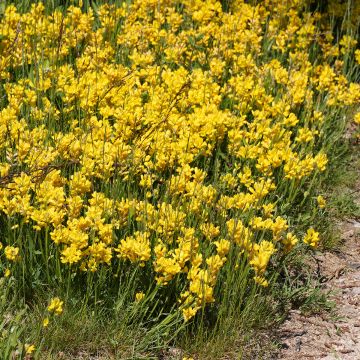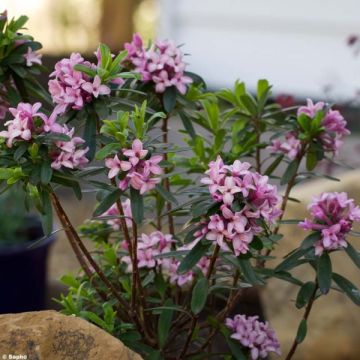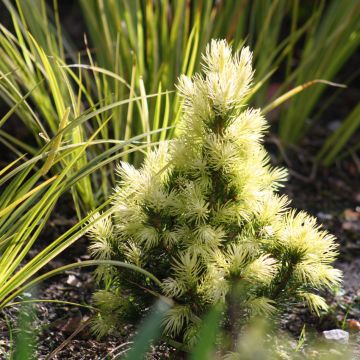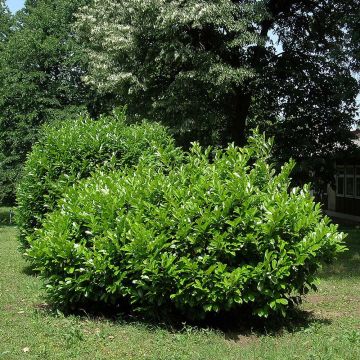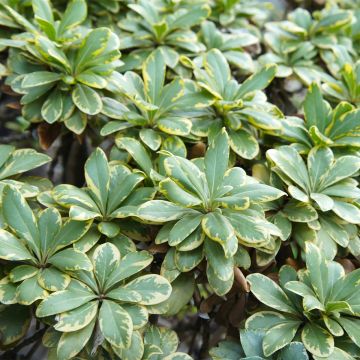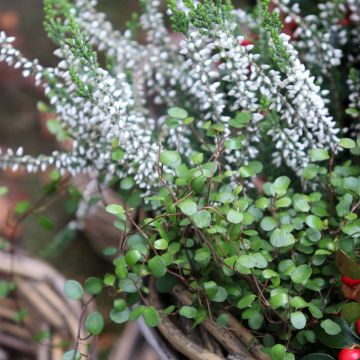

Rhaphiolepis umbellata f. ovata
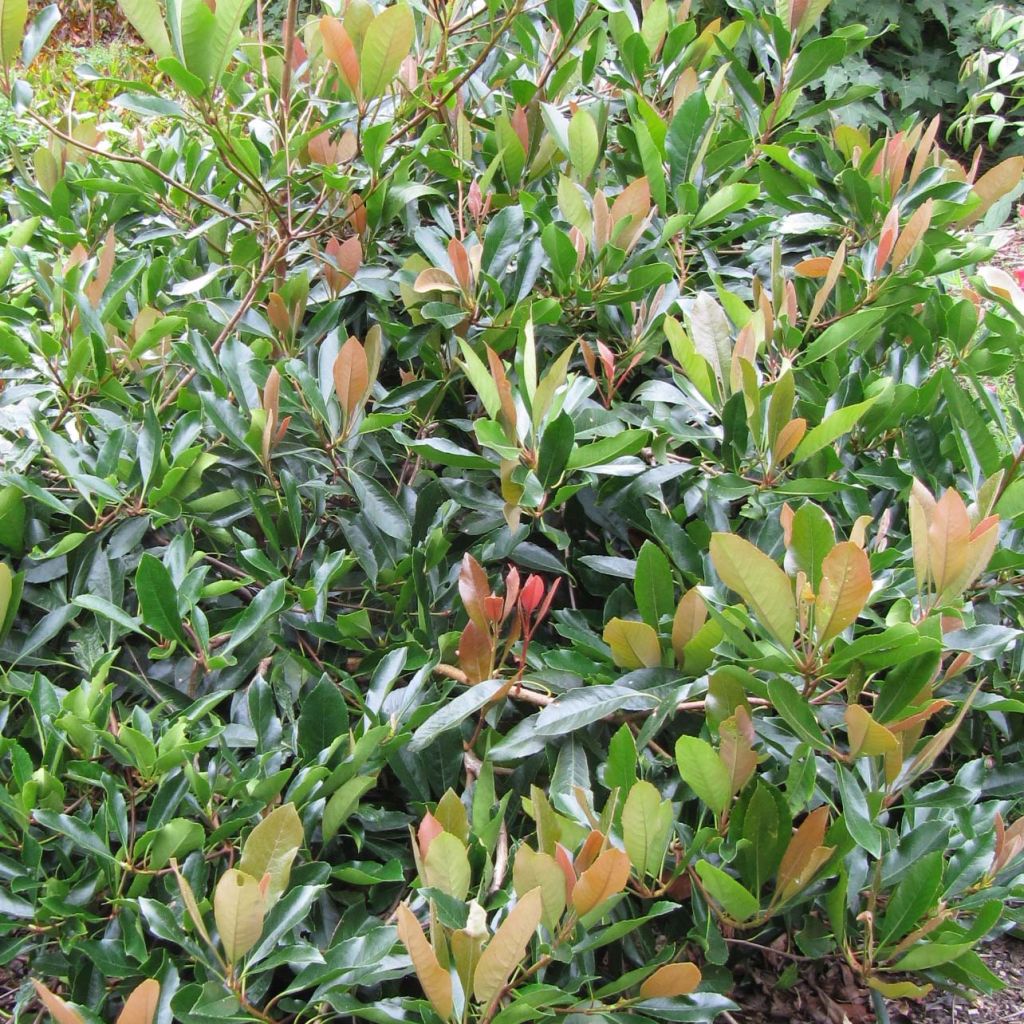

Rhaphiolepis umbellata f. ovata
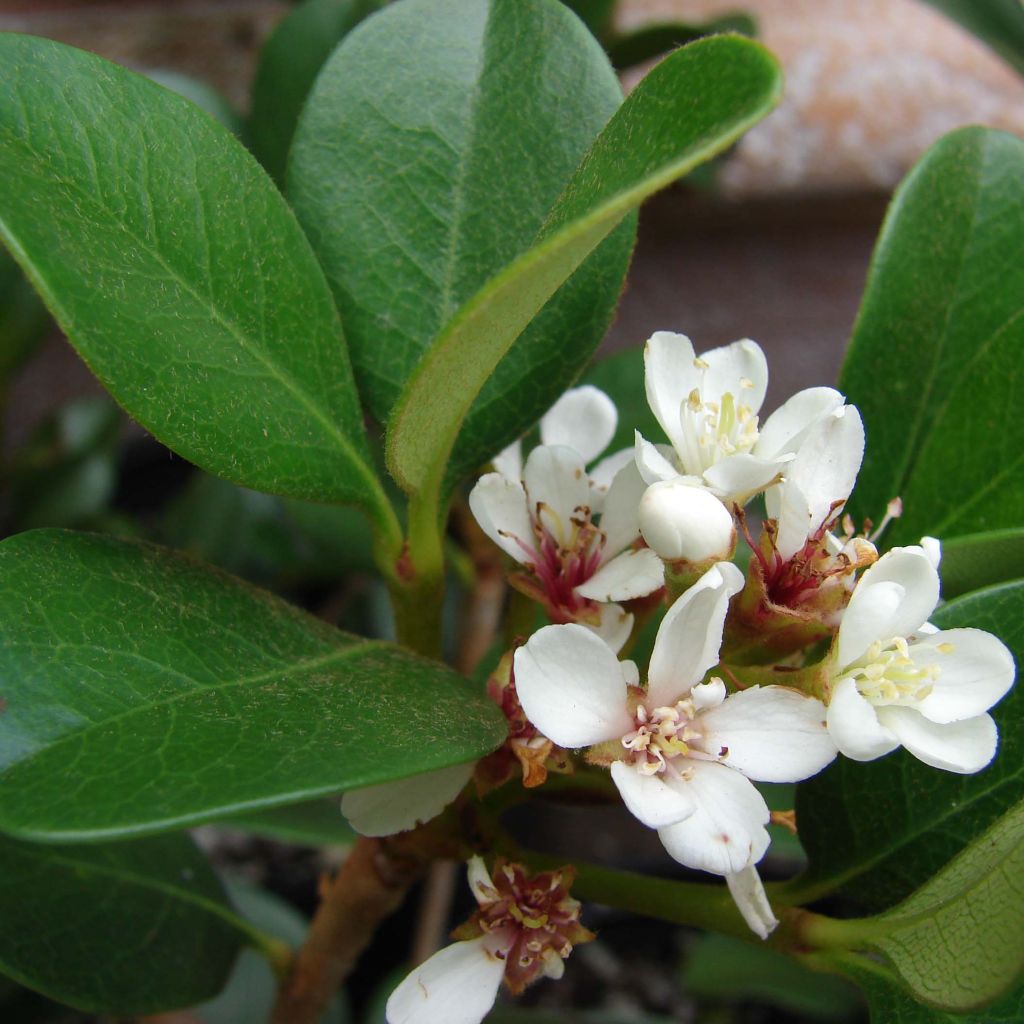

Rhaphiolepis umbellata f. ovata
Rhaphiolepis umbellata f. ovata
Rhaphiolepis umbellata Ovata
Yeddo Hawthorn
Perfect! I regularly order from this website and I have always been satisfied. My last order arrived on Saturday. I created two new flower beds and I had around twenty young plants. Each young plant was packaged in a paper sleeve, neatly arranged in boxes. Everything arrived in very good condition. I highly recommend this very reliable website that offers a wide selection of flowers. Thanks to them.
Yolande, 25/10/2021
Special offer!
Receive a €20 voucher for any order over €90 (excluding delivery costs, credit notes, and plastic-free options)!
1- Add your favorite plants to your cart.
2- Once you have reached €90, confirm your order (you can even choose the delivery date!).
3- As soon as your order is shipped, you will receive an email containing your voucher code, valid for 3 months (90 days).
Your voucher is unique and can only be used once, for any order with a minimum value of €20, excluding delivery costs.
Can be combined with other current offers, non-divisible and non-refundable.
Home or relay delivery (depending on size and destination)
Schedule delivery date,
and select date in basket
This plant carries a 24 months recovery warranty
More information
We guarantee the quality of our plants for a full growing cycle, and will replace at our expense any plant that fails to recover under normal climatic and planting conditions.

Would this plant suit my garden?
Set up your Plantfit profile →
Description
Rhaphiolepis umbellata f. ovata, the Japanese Hawthorn, is a beautiful evergreen bush with a neat appearance and a permanent elegance. Its compact and spreading habit is perfectly suited for small spaces and for growing in large pots on a sunny terrace. In early summer, it produces paniculate clusters of small white flowers, sometimes tinged with pink, charming in their simplicity but pleasantly fragrant. These are followed by long-lasting black-blue berries in winter. In mild climates, it can be used to mark a corner or as a geometric accent in a pattern of small evergreen bushes. It is all a matter of imagination and taste for this delightful Rhaphiolepis, which is easy to grow in well-drained soil, without excessive limestone.
Rhaphiolepis umbellata is a bush from the Rosaceae family, native to warm and relatively dry regions of the Far East (Japan and Korea). Rhaphiolepis are perfectly adapted to our Mediterranean or oceanic climates.
The ovata form is a selection with a compact and spreading habit that will not exceed 1m (3ft 4in) in height and 1.20m (3ft 11in) to 1.30m (4ft 4in) in width. Its growth is slow. Its evergreen foliage is composed of tough, entire, and spatulate leaves, 5 to 8cm (2 to 3.1in) long, with almost smooth edges. When they first emerge, they are covered with a fine grey pubescence, then they turn a fairly dark green-bronze colour with a shiny finish. The young branches are reddish-brown. This harmony of colours is already a adornment for this interesting bush throughout the year. The flowering takes place from May to June, depending on the climate. At the tip of each branch, a conical cluster, 5 to 10cm (2 to 3.9in) long, bears several dozens of small star-shaped flowers, 1 to 2cm (0.4 to 0.8in) in diameter, pleasantly fragrant. These flowers are usually white, sometimes tinged with light pink, and have a purple stamen centre. The flowering is followed by the formation of small ovoid berries less than 1cm (0.4in) in size, which turn red and then blue-black when ripe, and persist on the branches for a long time. Fresh seeds germinate very easily and quickly, within 8 days.
Rhaphiolepis umbellata f. ovata is a dense, well-groomed, floriferous, and colourful bush that is absolutely delightful. If your climate and soil allow it, plant it in a border or as a small hedge, but also on a sheltered and sunny terrace. While it dislikes excessive limestone in the soil, freezing winds, and cold winters, it is not bothered by sea winds, heat, or dry summers once established and can even flower in partially shaded areas. It is useful in coastal gardens, as its flowering, like that of Olearias and Escallonias, brightens the grey foliage of Atriplex, Bupleurum fruticosum, or Correa alba rosea, for example. In a large border, it can be paired with Cistuses, lavenders, Hebes, or spring-flowering bushes such as lilacs (Syringa microphylla 'Superba'), Kolkwitzia amabilis, Leptospermum, or Melaleuca. It adapts well to container gardening and can be stored frost-free in winter.
Rhaphiolepis umbellata f. ovata in pictures
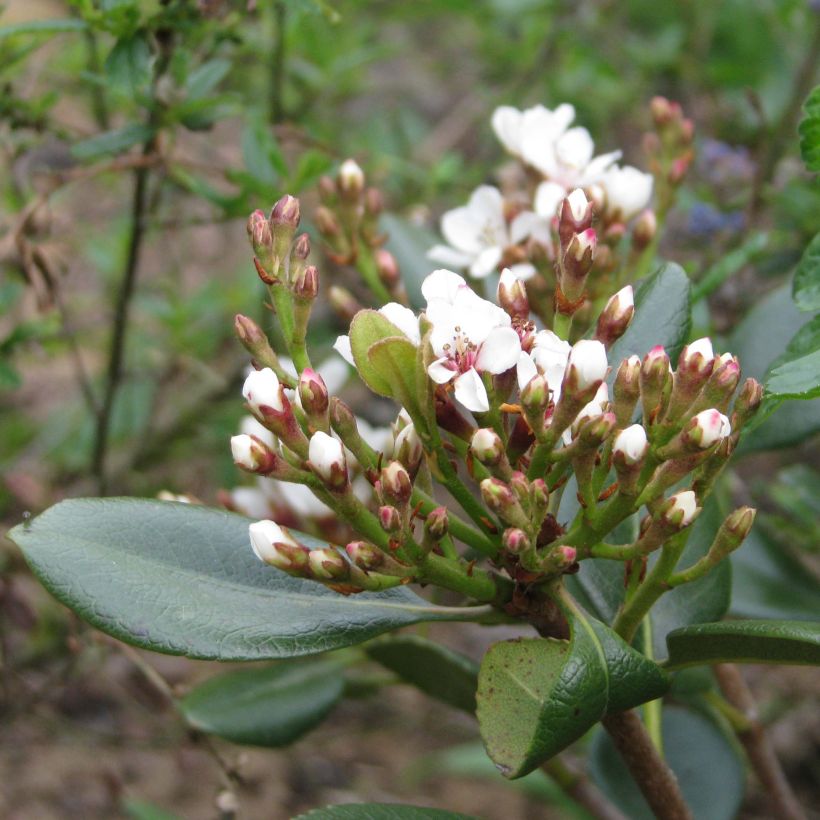

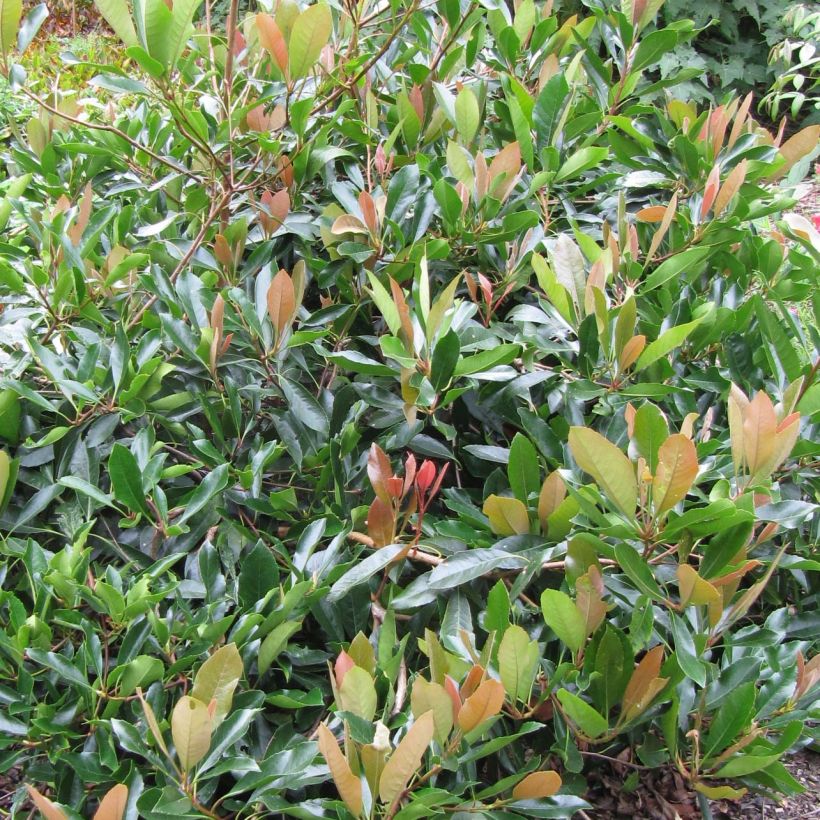

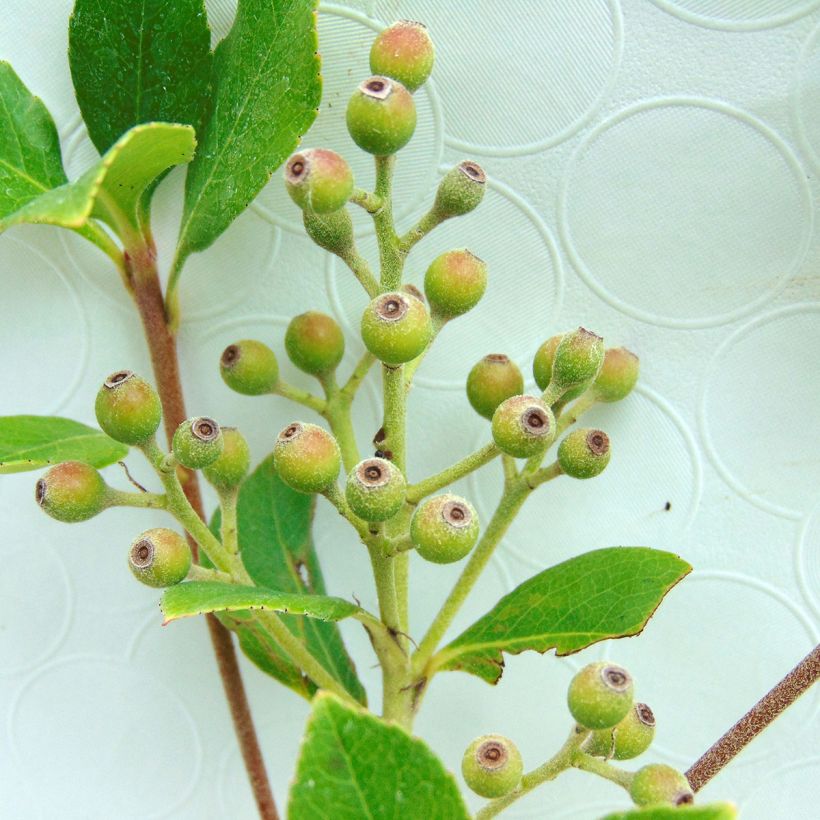

Plant habit
Flowering
Foliage
Botanical data
Rhaphiolepis
umbellata
Ovata
Rosaceae
Yeddo Hawthorn
Southeast Asia
Other Rhaphiolepis
View all →Planting and care
Rhaphiolepis umbellata is preferably planted in spring, or in autumn in very mild climates. Its growth is slow, but it lives for many years in the garden. It requires well-drained soil, prefers it to remain moist, but tolerates drought once well established. An acidic, neutral, or even slightly clayey and calcareous soil will be suitable, as long as it is well worked and amended with coarse sand and leaf compost. Choose a sheltered and warm location, protected from cold and dry winds. It blooms more abundantly in the sun, but tolerates semi-shaded exposures, especially in hot climates. Once well established, it requires no watering in summer, even in dry climates. It can withstand sea spray, but not cold winter winds. Optionally, apply a rose fertilizer in spring if your soil is very poor. It dislikes heavy soils and fears stagnant moisture, especially in winter. If the soil is too heavy and calcareous, it may suffer from chlorosis; if this is the case, apply a dose of chelated iron each year in spring. This bush is not particularly susceptible to diseases and pests. In cold regions, plant it in pots and store it indoors during severe frosts.
Perform a light pruning just after spring flowering to remove faded flowers.
Planting period
Intended location
Care
Planting & care advice
-
, onOrder confirmed
Reply from on Promesse de fleurs
Similar products
Haven't found what you were looking for?
Hardiness is the lowest winter temperature a plant can endure without suffering serious damage or even dying. However, hardiness is affected by location (a sheltered area, such as a patio), protection (winter cover) and soil type (hardiness is improved by well-drained soil).

Photo Sharing Terms & Conditions
In order to encourage gardeners to interact and share their experiences, Promesse de fleurs offers various media enabling content to be uploaded onto its Site - in particular via the ‘Photo sharing’ module.
The User agrees to refrain from:
- Posting any content that is illegal, prejudicial, insulting, racist, inciteful to hatred, revisionist, contrary to public decency, that infringes on privacy or on the privacy rights of third parties, in particular the publicity rights of persons and goods, intellectual property rights, or the right to privacy.
- Submitting content on behalf of a third party;
- Impersonate the identity of a third party and/or publish any personal information about a third party;
In general, the User undertakes to refrain from any unethical behaviour.
All Content (in particular text, comments, files, images, photos, videos, creative works, etc.), which may be subject to property or intellectual property rights, image or other private rights, shall remain the property of the User, subject to the limited rights granted by the terms of the licence granted by Promesse de fleurs as stated below. Users are at liberty to publish or not to publish such Content on the Site, notably via the ‘Photo Sharing’ facility, and accept that this Content shall be made public and freely accessible, notably on the Internet.
Users further acknowledge, undertake to have ,and guarantee that they hold all necessary rights and permissions to publish such material on the Site, in particular with regard to the legislation in force pertaining to any privacy, property, intellectual property, image, or contractual rights, or rights of any other nature. By publishing such Content on the Site, Users acknowledge accepting full liability as publishers of the Content within the meaning of the law, and grant Promesse de fleurs, free of charge, an inclusive, worldwide licence for the said Content for the entire duration of its publication, including all reproduction, representation, up/downloading, displaying, performing, transmission, and storage rights.
Users also grant permission for their name to be linked to the Content and accept that this link may not always be made available.
By engaging in posting material, Users consent to their Content becoming automatically accessible on the Internet, in particular on other sites and/or blogs and/or web pages of the Promesse de fleurs site, including in particular social pages and the Promesse de fleurs catalogue.
Users may secure the removal of entrusted content free of charge by issuing a simple request via our contact form.
The flowering period indicated on our website applies to countries and regions located in USDA zone 8 (France, the United Kingdom, Ireland, the Netherlands, etc.)
It will vary according to where you live:
- In zones 9 to 10 (Italy, Spain, Greece, etc.), flowering will occur about 2 to 4 weeks earlier.
- In zones 6 to 7 (Germany, Poland, Slovenia, and lower mountainous regions), flowering will be delayed by 2 to 3 weeks.
- In zone 5 (Central Europe, Scandinavia), blooming will be delayed by 3 to 5 weeks.
In temperate climates, pruning of spring-flowering shrubs (forsythia, spireas, etc.) should be done just after flowering.
Pruning of summer-flowering shrubs (Indian Lilac, Perovskia, etc.) can be done in winter or spring.
In cold regions as well as with frost-sensitive plants, avoid pruning too early when severe frosts may still occur.
The planting period indicated on our website applies to countries and regions located in USDA zone 8 (France, United Kingdom, Ireland, Netherlands).
It will vary according to where you live:
- In Mediterranean zones (Marseille, Madrid, Milan, etc.), autumn and winter are the best planting periods.
- In continental zones (Strasbourg, Munich, Vienna, etc.), delay planting by 2 to 3 weeks in spring and bring it forward by 2 to 4 weeks in autumn.
- In mountainous regions (the Alps, Pyrenees, Carpathians, etc.), it is best to plant in late spring (May-June) or late summer (August-September).
The harvesting period indicated on our website applies to countries and regions in USDA zone 8 (France, England, Ireland, the Netherlands).
In colder areas (Scandinavia, Poland, Austria...) fruit and vegetable harvests are likely to be delayed by 3-4 weeks.
In warmer areas (Italy, Spain, Greece, etc.), harvesting will probably take place earlier, depending on weather conditions.
The sowing periods indicated on our website apply to countries and regions within USDA Zone 8 (France, UK, Ireland, Netherlands).
In colder areas (Scandinavia, Poland, Austria...), delay any outdoor sowing by 3-4 weeks, or sow under glass.
In warmer climes (Italy, Spain, Greece, etc.), bring outdoor sowing forward by a few weeks.






























